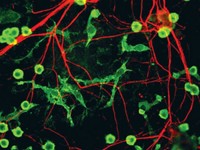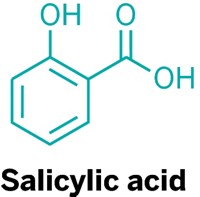Advertisement
Grab your lab coat. Let's get started
Welcome!
Welcome!
Create an account below to get 6 C&EN articles per month, receive newsletters and more - all free.
It seems this is your first time logging in online. Please enter the following information to continue.
As an ACS member you automatically get access to this site. All we need is few more details to create your reading experience.
Not you? Sign in with a different account.
Not you? Sign in with a different account.
ERROR 1
ERROR 1
ERROR 2
ERROR 2
ERROR 2
ERROR 2
ERROR 2
Password and Confirm password must match.
If you have an ACS member number, please enter it here so we can link this account to your membership. (optional)
ERROR 2
ACS values your privacy. By submitting your information, you are gaining access to C&EN and subscribing to our weekly newsletter. We use the information you provide to make your reading experience better, and we will never sell your data to third party members.
Biological Chemistry
Plant protein acts like a prion
Discovery contributes to idea that prions are more than just bad actors
by Michael Torrice
April 29, 2016
| A version of this story appeared in
Volume 94, Issue 18

Prion proteins have a notorious reputation. These types of proteins can fold into conformations that coax other prions to join them, leading to the formation of insoluble protein aggregates. This is the mechanism behind some neurodegenerative diseases such as Creutzfeldt-Jakob, mad cow, and maybe Alzheimer’s disease.
But not all prions are bad. In the past decade, researchers have found that some organisms, such as yeast, flies, and even mammals, use prions’ self-propagating clumping as part of normal cellular functions.
Now, a team of scientists reports the first protein in plants that exhibits prion behavior (Proc. Natl. Acad. Sci.USA 2016, DOI: 10.1073/pnas.1604478113). The findings provide further evidence that prions are more than just disease-causing abnormalities of the protein world.
Susan Lindquist of the Whitehead Institute for Biomedical Research and colleagues looked at suspected prion domains in three proteins from the flowering plant Arabidopsis thaliana.
To test for prion behavior, the team replaced the prion domain of a well-studied yeast protein, Sup35, with the suspected prion domains of each of the candidates. Once inserted into yeast, the candidate domain from the flowering protein luminidependens acted like Sup35, showing that the plant protein could behave like a prion in yeast.
Lindquist says researchers still need to show that the protein acts like a prion in the plant itself. The team hypothesizes the prion might play a role in helping the plant determine when to flower by storing information about the length of winters, a process called vernalization.
But plant molecular biologist Scott Michaels of Indiana University, Bloomington, points out that although luminidependens helps regulate flowering, it is not involved in vernalization pathways.
Still, he thinks the work raises an interesting question of how the plants might rely on the prion mechanism.
According to Lindquist, the findings demonstrate how prion behavior can be found in many organisms. “Prions are famous for how bad they can be,” she says. “We really need to open our eyes and see that they’re not just bad things and look for them in other places.”





Join the conversation
Contact the reporter
Submit a Letter to the Editor for publication
Engage with us on Twitter